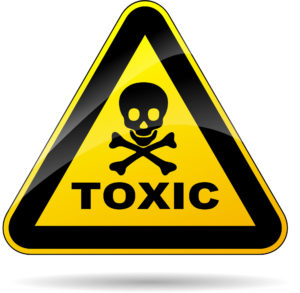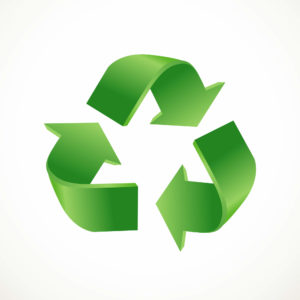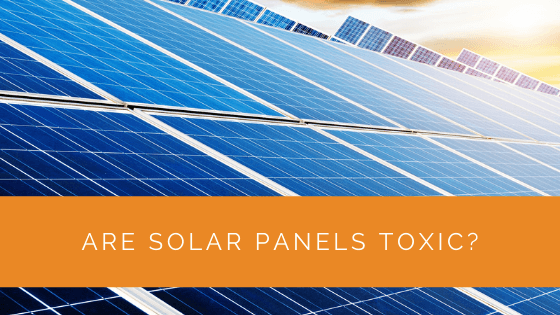Solar panels are devices that utilize the activity of solar cells to generate electricity for homes and businesses. These panels use solar energy, a type of renewable energy available in abundance.
The solar panels installed in your home has many benefits as it is clean energy that can be used to drive all your appliances. Hence, solar panels reduce your overall carbon footprint by eliminating or reducing the need for fossil fuels such as natural gas for power generation.
As a result of using solar panels, you can also reduce greenhouse gas emissions involved from using non-renewable energy. Due to the inflow of customers over the past few years in the solar market, the solar industry is witnessing a higher number of solar panel producers.
However, there is a good and bad side to every sector in this world. Similarly, there are a few cons of manufacturing solar panels, which can, in turn, adversely affect the environment.
Contents
- 1 Key Takeaways
- 2 What Are The Raw Materials Used In The Manufacture Of Solar Panels That Can Be Toxic?
- 3 Do Solar Panels Leave Behind Toxic Waste?
- 4 How Bad Are Solar Wastes Compared To Nuclear Wastes?
- 5 Does The Manufacturing Process Of Solar Panels Have Toxic Effects On The Environment?
- 6 How Can Solar Panels Be Toxic For Human Health?
- 7 How Can Solar Panel Wastes Be Controlled?
- 8 Is The Proper Disposal Of Solar Waste Expensive?
- 9 Case Study: Addressing Solar Panel Toxicity Through Responsible Practices
- 10 Expert Insights From Our Solar Panel Installers About Solar Panel Toxicity
- 11 Experience Solar Excellence with Us!
- 12 Conclusion
Key Takeaways
- Solar panels offer numerous benefits, including reducing carbon footprints and greenhouse gas emissions associated with non-renewable energy sources.
- However, the manufacturing, disposal, and certain materials used in solar panels can be toxic to the environment and human health, contributing to hazardous waste and pollution.
- Recycling and proper disposal methods are crucial for mitigating the environmental impact of solar panel waste, and government subsidies may be needed to address the growing issue of waste management in the solar industry.
What Are The Raw Materials Used In The Manufacture Of Solar Panels That Can Be Toxic?
One of the primary raw materials used in the manufacture of solar panels is silicon. Silicon cells or silicon solar cells require crystalline silicon for their production. The production of crystalline silicon leaves behind a byproduct known as silicon tetrachloride.
High amounts of silicon tetrachloride are produced as waste for many large-scale solar projects. This compound is a form of toxic waste that can kill flora and fauna and pollute the environment.
Apart from silicon tetrachloride from silicon solar cells, Cadmium indium gallium (di)selenide, copper indium selenide, and cadmium telluride are the other chemicals that are used in solar panels. These are all toxic materials and toxic metals that affect the lungs, sometimes even causing lung fibrosis.
The entire process of panel production to manufacture new panels utilizes these toxic materials, contributing to hazardous waste. This hazardous waste from solar companies has adverse effects on both human beings and the environment.
Do Solar Panels Leave Behind Toxic Waste?
One of the most fundamental ways in which solar panels are toxic is from the waste produced from broken panels or discarded panels. Just like the use of plastics was considered revolutionary initially, the world was quickly gripped into a looming waste problem because there was no natural and sustainable way in which plastics could be disposed of.
The same aspect will eventually apply to solar panel disposal. Broken solar panels could be a result of harsh weather, such as hail, storms, etc. However, even minor damages from dirt and branches can also cause significant damage.
Once broken, the panel releases harmful substances such as lead, silicon, cadmium, etc. If these substances reach the soil, they can significantly pollute the groundwater supply.
Discarded solar panels pose the same risk. When old solar panels reach their warranty age or end of life, they are usually dumped in landfills. So the toxic elements will once again leach into the soil, causing soil pollution. It is expected that by the year 2050, close to six million metric tons of solar waste will be produced every year.

How Bad Are Solar Wastes Compared To Nuclear Wastes?
Nuclear power is an efficient power source for producing electricity. However, nuclear wastes are radioactive in nature. These wastes contribute to the concentration of plutonium in the environment.
Plutonium, when inhaled, can accumulate in the lungs and kill the tissues of the lungs, causing irreversible damage in the form of cancer. On the other hand, radiation can also lead to the growth of tumors in humans.
While nuclear plants contribute to overall greenhouse gas emissions, sustainable energy source technologies face the problem of waste management. A report also suggested that solar panels produce about three hundred times more solar panel waste than nuclear or atomic wastes.
Hence, when compared to power generated from nuclear plants, solar farms produce more toxic solar panel waste. Even though solar energy is a form of green energy, the waste produced from solar farms is a huge problem for the environment.
Does The Manufacturing Process Of Solar Panels Have Toxic Effects On The Environment?
If the aluminum frame of the solar panel is not applied correctly, the stability of the panel will be compromised. The frame can cause the breakage of the panel, releasing toxic components into the environment.
About fifty grams of carbon dioxide is produced every hour during the process of making a solar panel. The panel manufacturing process also utilizes large amounts of water and fossil fuels, such as coal to produce carbon dioxide.
Commercial and industrial panels are produced on a large scale for producing solar energy but at a very high environmental cost. Chemicals such as hydrofluoric acid are also released while manufacturing thin-film panels.
When hydrofluoric acid comes in contact with the skin, it penetrates through the skin, severely causing damage to the skin tissues. Being a strong acid, hydrofluoric acid can cause massive corrosive action on the skin.
How Can Solar Panels Be Toxic For Human Health?
Residential installations of new solar panels for the production of solar power have been shown to affect the health of humans. While a solar panel that can convert sunlight to electricity is considered an energy-producing asset, many people are not aware of the health risks that these panels pose for humans.
People suffering from electromagnetic hypersensitivity are at a higher risk of getting ill from radiation released by solar cells. The common symptoms usually include headaches, which people typically ignore. However, in the future, this continual exposure can cause heavy consequences.
Silicon, which is the primary component of solar panels that generate solar power, usually exists as silicon dust on the solar panel. If this silicon dust is inhaled, it can cause silicosis. Silicosis is a type of lung disease that reduces the ability of the lungs to absorb oxygen.
However, if you buy your panels from government-certified manufacturers, the chances of health risks are reduced, as these panels are adequately tested. Hence, it is always safer to buy tier 1 panels compared to tier 2 or tier 3 panels.

How Can Solar Panel Wastes Be Controlled?
One of the best ways to reduce the number of wastes generated from end of life panels is to recycle solar panels. From these end of life solar panels, a number of valuable materials can be extracted that have commercial applications.
The solar panel recycling process involves recycling many components of the panel, such as the aluminum frame. Other materials such as glass and copper can be incinerated to prevent them from affecting the environment.
The components can also be recycled by electrical techniques for commercial use in the glass and metal industry. People who own cars that run on electricity can reuse refurbished panels to charge these cars. As electric cars continue to be in high demand, refurbished solar panels can be used to power them.
Electronic waste from these panels can be separated and can undergo the recycling process as well. There are also several recycling facilities that take in old panels for solar panel recycling.
Is The Proper Disposal Of Solar Waste Expensive?
The process of removing and efficiently transporting panels disposal sites or recycling firms is a delicate job that requires trained experts. These high costs of disposal have the capacity to crush industry competitiveness and discourage customers.
The problem of proper disposal of panel wastes will only increase in the future with more installations. The National Renewable Energy Laboratory or NREL’s estimated ceiling for peak sale of panels in the residential market is the year 2050.
When this logistics growth curve is used to plot future installations with the early replacement curve, the number of panel wastes will be much more compared to the number of panels installed. The primary reason behind these readings is that the logistic growth curve capped about seven hundred gigawatts in the year 2050.
The government is the primary organization concerned with taking care of the waste generated from these panels. Government subsidies are required to make sure that waste from panels is disposed of appropriately. These subsidies can also help to quickly develop capacity commensurate.
As other renewable energy technologies, such as wind energy, also face identical waste management issues, the pressure on companies for proper waste management increases. For example, there is an estimated increase in the number of gargantuan wind turbine blades that will add to the waste in landfills.
Even though early replacements occur, strict legislation may cause the solar industry to sink, which can adversely affect the step towards using sustainable energy sources.
Even though the issue of proper waste management exists, the solar industry will definitely witness investments. These investments will hopefully find a solution to the waste management problem and promote more research on eliminating the toxic aspects of solar power.
Case Study: Addressing Solar Panel Toxicity Through Responsible Practices
Background
As the demand for solar energy increases, concerns about the environmental and health impacts of solar panel waste have become more prominent. At Solar Panels Network USA, we are committed to addressing these issues through responsible practices and innovative solutions.
Project Overview
Our project involved the installation of a large-scale solar panel system for a residential community while ensuring minimal environmental impact. The key objectives were to reduce the carbon footprint of the community and to manage the waste generated from the installation and potential future disposal of the panels.
Implementation
Material Sourcing and Selection
We prioritized sourcing panels from manufacturers with stringent quality controls and environmental certifications. This ensured that the panels used in the project had lower levels of toxic materials such as cadmium, lead, and silicon tetrachloride.
Installation and Maintenance Protocols
During installation, we implemented protocols to secure the aluminum frames of the panels to prevent breakage and potential release of harmful substances. Regular maintenance checks were scheduled to identify and address any minor damages early, thus preventing significant environmental hazards.
Waste Management Strategy
We developed a comprehensive waste management strategy focusing on recycling and proper disposal methods. This included:
- Partnering with recycling facilities that specialize in extracting valuable materials from end-of-life panels.
- Educating the community on the importance of recycling and the potential hazards of improper disposal.
- Establishing a collection program for old and damaged panels to ensure they were processed correctly.
Results
The project successfully reduced the community’s carbon footprint by transitioning to renewable energy. Additionally, our proactive waste management strategy led to a 50% reduction in the potential environmental impact from panel waste. The recycled materials from old panels were repurposed for new solar installations, supporting a circular economy within the solar industry.
Summary
Our approach at Solar Panels Network USA demonstrates that with responsible practices, the environmental and health impacts of solar panel toxicity can be significantly mitigated. By focusing on quality sourcing, secure installation, and effective waste management, we can continue to promote the adoption of solar energy as a sustainable solution for the future.
Expert Insights From Our Solar Panel Installers About Solar Panel Toxicity
One of the most crucial aspects of solar panel installation is ensuring proper handling and disposal of materials like silicon tetrachloride. This substance, a byproduct of silicon cell production, can have detrimental effects on the environment if not managed correctly.
Senior Solar Installation Engineer
During my years in the industry, I’ve seen the importance of sourcing solar panels from certified manufacturers. Panels from these sources are rigorously tested, reducing the health risks associated with exposure to toxic substances like cadmium and lead.
Lead Solar Technician
The installation process must account for the potential release of toxic materials from damaged panels. We always ensure that panels are securely framed and properly maintained to prevent environmental contamination.
Solar Installation Supervisor
Experience Solar Excellence with Us!
Trust in Solar Panels Network USA, where our seasoned experts deliver top-quality solar solutions for homes and businesses nationwide. With a legacy of countless successful installations and a commitment to sustainable energy, we’re your reliable partner in the solar journey. Ready for a brighter, eco-friendly future? Call us now at (855) 427-0058 and harness the power of the sun!
Conclusion
The functioning of solar panels is not toxic to a large extent, however, the main issue of toxicity arises with the disposal of panels. While there is government intervention in the matter to deal with these toxic elements, a lack of research has delayed the process of finding a suitable solution.
The entire purpose of utilizing clean energy is disrupted if the starter materials used to produce this energy is toxic and non-biodegradable. The same issue applies to solar systems. Although solar systems produce green energy, their production is impossible without using harmful materials.
These materials only add to the degrading quality of the environment by polluting it further. As people learn more about the benefits of using solar systems to power their houses, the demand for these systems will resultantly increase.
The increase in demand for these systems will, in turn, increase their production. Hence, a cycle of production and disposal of toxic wastes will be put in place. A suitable alternative to avoid these situations can be if organizations invest in solar research facilities to find sustainable ways to produce panels.
Adequate research is necessary before implementation in industries. The same applies to the manufacture of solar systems. In this way, a proper and efficient waste management system can be put in place to reduce the pressure on mother nature.
About the Author
Solar Panels Network USA stands at the forefront of solar energy solutions, driven by a team of seasoned solar engineers and energy consultants. With over decades of experience in delivering high-quality solar installations and maintenance, we are committed to promoting sustainable energy through customer-centric, tailored solutions. Our articles reflect this commitment, crafted collaboratively by experts to provide accurate, up-to-date insights into solar technology, ensuring our readers are well-informed and empowered in their solar energy decisions.

